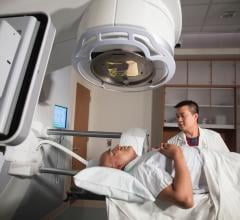April 10, 2007 - Masimo, the inventor of Pulse CO-Oximetry and Read-Through Motion and Low Perfusion pulse oximetry, reported that three new independent studies, including one presented the recent International Anesthesiology Research Society (IARS) Clinical & Scientific Congress in Orlando, concluded that Masimo Acoustic Respiratory Monitoring technology (ARM) is "at least as accurate as capnometry" and "significantly more reliable" for monitoring respiration in spontaneously breathing patients.
Respiration is one of the five vital signs, but clinicians have long looked for a continuous and noninvasive method of monitoring respiration that is clinically accurate, easy to use and well tolerated by patients. Current methods of respiration monitoring, including impedance pneumography with ECG and end-tidal CO2 with capnometry, each have limitations that make them unreliable in certain clinical situations.
In the study released at the recent IARS, conducted by M. R. Macknet, MD and a team of researchers at Loma Linda University's Department of Anesthesiology, fifteen pediatric PACU patients were monitored with Masimo's ARM technology consisting of an adhesive bioacoustic sensor applied to the patient's neck and connected to a breathing frequency monitor prototype. In addition, a nasal cannula was placed, secured with tape, and connected to a capnometer. The study showed that "premature cannula dislodgement occurred in 14 patients" in less that 20 minutes, while "in no patient was the bioacoustic sensor dislodged before the end of the stay in the PACU."(1)
"This data shows the relative ease and high incidence of capnometer cannula dislodgement compared to the new bioacoustic sensor," the researchers commented. "In clinical settings where continuous and reliable monitoring of spontaneous respiration is important, the new bioacoustic sensor provides significantly greater patient connection time, which should lead to significantly more reliable monitoring of respiration rate."
In two studies released in January at the 2007 Society for Technology in Anesthesiology annual meeting, researchers monitored ten postoperative adult ICU and six pediatric PACU patients in separate studies with Masimo's ARM technology as well as a nasal cannula connected to a capnometer. They concluded that Masimo's new bioacoustic respiratory sensor "demonstrates accuracy for respiratory rate monitoring as good as capnometry" and that the device "offers multiple benefits over existing devices and has a potential to improve monitoring in a general care setting."(2),(3)
Joe E. Kiani, Founder & CEO of Masimo stated, "We are happy to see that these initial independent studies reinforce our belief that Masimo Acoustic Respiratory Monitoring has the potential to be a breakthrough continuous and noninvasive respiratory rate monitoring technology that is accurate, reliable and easy to use. Similar to Masimo SET Read-Through Motion and Low Perfusion pulse oximetry technology, we recognized that one of the other five primary vital signs had no available method of giving reliable results and decided to see if we could come up with a better solution. We are encouraged that the initial clinical research indicates that the non-obtrusive nature of the Masimo ARM technology application may help overcome the problems of conventional respiratory rate monitors without compromising measurement accuracy."
Masimo expects to combine its Masimo Rainbow SET Read-Through Motion and Low Perfusion pulse oximetry with Masimo ARM technology as part of a general floor monitoring solution designed to increase patient safety and heed the growing call to find ways to reduce unnecessary deaths on general care floors. The combination of these two technologies will give hospitals a continuous and noninvasive way to accurately monitor a patient's oxygenation and ventilation during patient-controlled analgesia, consistent with the new recommendations from the Anesthesia Patient Safety Foundation (APSF). In addition, the combination of Masimo Rainbow SET pulse oximetry and Masimo ARM should assist hospitals in being compliant with new American Society of Anesthesia (ASA) guidelines for management of patients at risk of obstructive sleep apnea (OSA) by providing an accurate and reliable combination of oxygen saturation and respiration rate monitoring.
The technology is currently undergoing additional clinical and engineering testing and is expected to be introduced at Alpha Sites in late 2007. For more information, visit www.masimo.com


 June 07, 2022
June 07, 2022 








